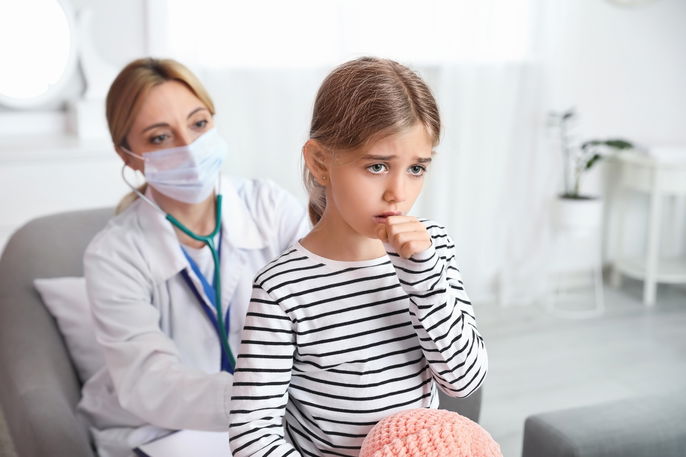Whooping cough, or pertussis, is an infectious respiratory disease caused by Bordetella pertussis bacteria. It is characterized by a persistent dry, hacking cough that is associated with a high-pitched intake of air when breathing in. It may also present with a fever, general malaise and a runny nose.
Whooping cough is more common in children under 6 months of age who have not been vaccinated, but it can also occur in children, adolescents and adults who have not completed their vaccination schedule.
If you notice signs and symptoms of whooping cough, you should see a doctor for assessment and treatment. Treatment is aimed at eliminating this bacteria with antibiotics to prevent complications and worsening, and relieving symptoms.

Common symptoms
The main symptoms of whooping cough are:
- Dry, hacking cough that is associated with a high-pitched intake of air, sounding like a "whoop"
- Runny nose
- General malaise
- Low fever
- Vomiting from persistent coughing
Symptoms of whooping cough usually appear between 7 and 10 days after contact with the bacteria. It is important that the pediatrician or general practitioner is consulted in the presence of signs and symptoms suggestive of whooping cough, as this allows treatment to be started immediately and prevent the development of complications, such as ear infection, pneumonia, dehydration, seizures, brain changes and, in the most serious cases, death.
How it's transmitted
Pertussis is a highly transmissible infectious disease, and transmission can occur through direct contact between an unvaccinated person and an infected person. Whooping cough can also be transmitted through contaminated droplets that are released into the air from coughing, sneezing or talking.
Confirming a diagnosis
A whooping cough diagnosis is initially made by evaluating the patient's signs and symptoms. If suspected, the doctor can order further testing to confirm the presence of the bacteria.
This test is a nasopharyngeal swab, in which a cotton swab is inserted deep into the nose to collect a specimen of airway secretions is collected. This specimen is then sent to a lab for testing to confirm or rule out the presence of this bacteria..
The dodctor may opt to order a blood test for adolescents and adults to test for antibodies against the Bordetella pertussis bacteria.
Treatment options
Treatment for whooping cough aims to eliminate the bacteria and prevent worsening or complications. Antibiotics like azithromycin, clarithromycin or erythromycin can be prescribed to help speed-up recovery.
The antibiotic that is chosen will depend on the patient's symptoms, as well as other side effects, like potential side effects or possible drug effects. However, they are most effective if prescribed in the initial phases of infection.
In children, hospital admission for treatment may be necessary, as coughing attacks can be intense and lead to the rupture of small veins and arteries in the brain.
Prevention measures
Pertussis can be prevented through vaccination with a series of 5-vaccine series. The whooping cough vaccine that is usually given in combination with other vaccines against tetanus and diptheria, with boosters given in adolescents, adults and pregnant women. Vaccination may not prevent the disease entire, but it can reduce its severity.
To prevent transmission, it is important to avoid closed environments with those presenting with coughs, and to avoid contact with anyone with a confirmed diagnosis.






























